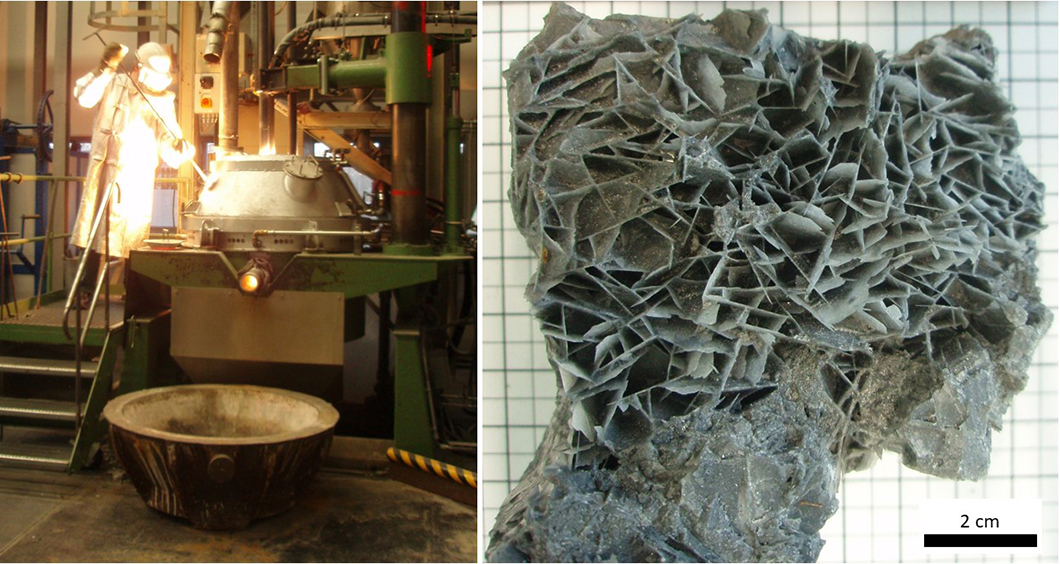
Left: Small-scale electric arc furnace of BAM, right: Solidified slag after carbothermal reduction with visible alite crystals
Source: BAM, division Thermochemical Residues Treatment and Resource Recovery
In the European Union, about 10.4 million tons of basic oxygen furnace slag (BOFS) are produced annually as a by-product of steel production. Currently, BOFS is mainly used in road construction, earthwork, and hydraulic engineering. However, efforts are being made to use BOFS for higher-value applications.
In recent decades, researchers have investigated the production of Portland cement clinker and crude iron from BOFS. By reductive treatment at high temperature, the iron oxides in molten BOFS are reduced to metallic iron, which separates from the mineral phase due to its higher density. The remaining mineral phase has a low iron content and a chemical composition similar to Portland cement clinker.
In this study, reductive treatment was performed on a German BOFS in the small-scale electric arc furnace at BAM using petrol coke as a reducing agent. The mineral product contained large, elongated crystals of alite (Ca3SiO5), the main constituent of Portland cement clinker. The content of foreign ions in the alite crystals was determined and the hydraulic activity of the mineral product was investigated. Despite the similar chemical and mineralogical composition, the mineral product reacted more slowly and reached a lower degree of hydration compared with commercial Portland Cement. Nevertheless, after specific adaptations, the mineral product could be used as a substitute for Portland cement clinker. Without further modifications, it can be used as a cement component or concrete addition.
The production of Portland cement clinker and crude iron from BOFS benefits both the cement and steel industry. The substitution of cement clinker from conventional cement production leads to a reduction in greenhouse gas emissions. The use of by-products saves the steel industry costly landfilling and may even bring economic advantages. Furthermore, it may be possible to return the recovered crude iron to the production process. However, a cost-benefit analysis is essential, as the reductive post-treatment of slags requires high temperatures and is a logistical challenge for most steel plants.
Synthesis and characterisation of alites from reduced basic oxygen furnace slags
Katharina Schraut, Burkart Adamczyk, Christian Adam, D. Stephan, Birgit Meng, Sebastian Simon, Julia von Werder
published in Cement and Concrete Research, Vol. 147, page 6518, 2021
BAM, division Thermochemical Residues Treatment and Resource Recovery division Building Materials, division Technology of Construction Materials


